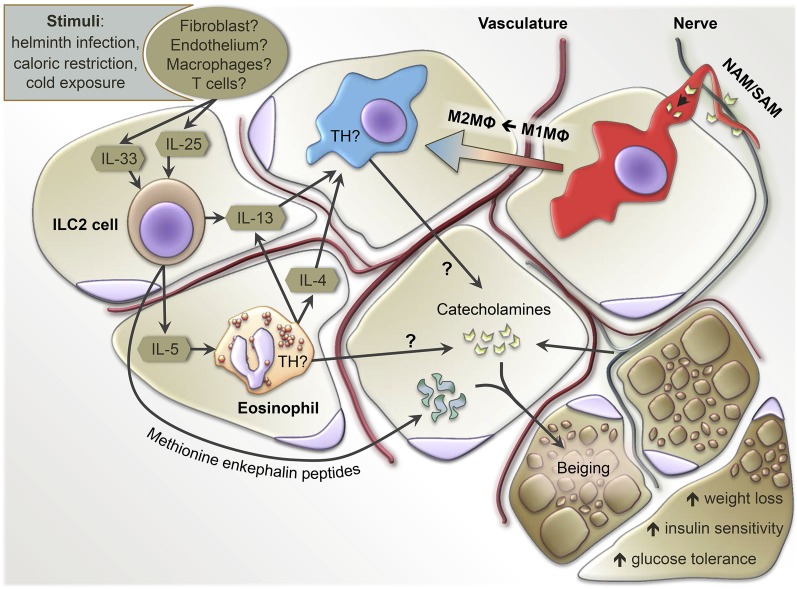Fig. 1.
Summary of known and potential innate type 2 immune cell interactions in the regulation of AT homeostasis. Stimuli, such as helminth infection, caloric restriction, or cold exposure, can induce the expression of IL-33/IL-25 to drive ILC2 numbers and activation. ILC2s secrete IL-5 to increase eosinophil numbers, which, in concert with one another, produce IL-13 and/or IL-4 to maintain M2-like macrophages (M2MΦ) or polarize M1-like macrophages (M1MΦ) into M2 macrophages. While innervating nerves are classically understood as the primary source of AT catecholamines, controversial data suggests that M2 macrophages and eosinophils may also supply catecholamines via expression of TH. Sympathetic NAMs/SAMs tightly align with AT nerves and can both uptake and catabolize nerve-derived catecholamines, reducing the available pool. Regardless of the source, catecholamines induce a thermogenic active state in adipocytes of WAT known as beiging. Alternatively, ILC2s have been shown to induce beiging via methionine enkephalin peptides, independent of eosinophils and M2 macrophages.

